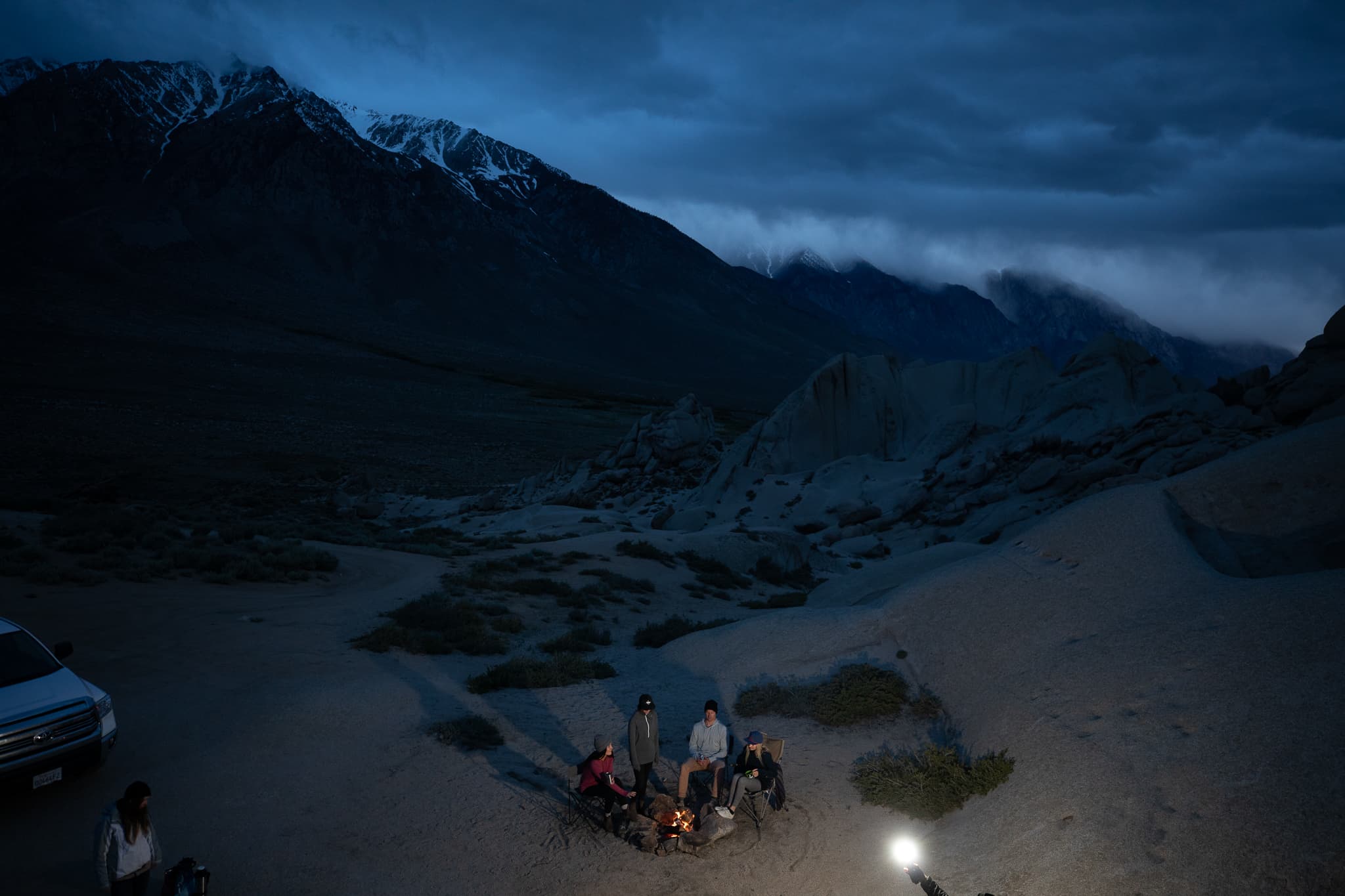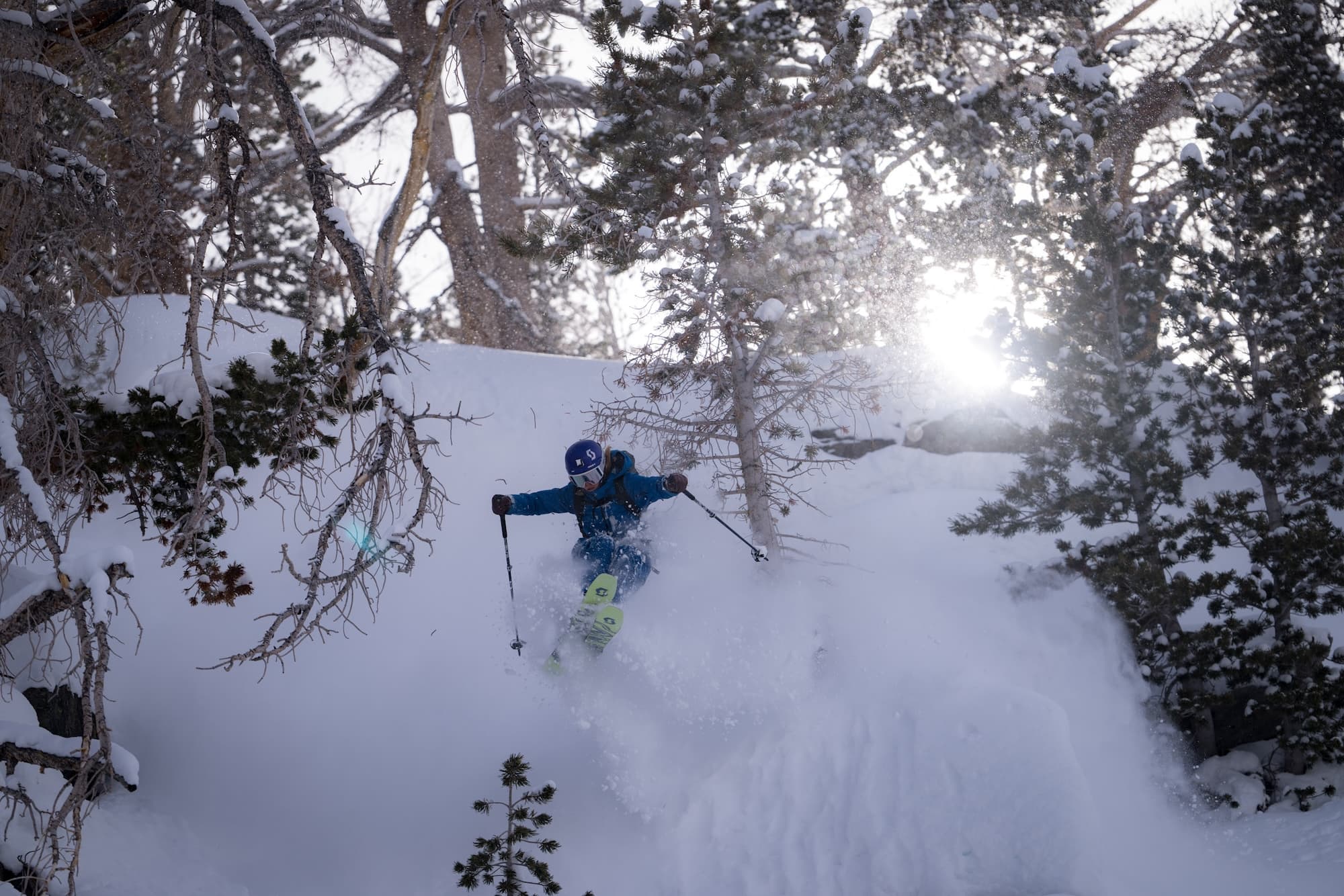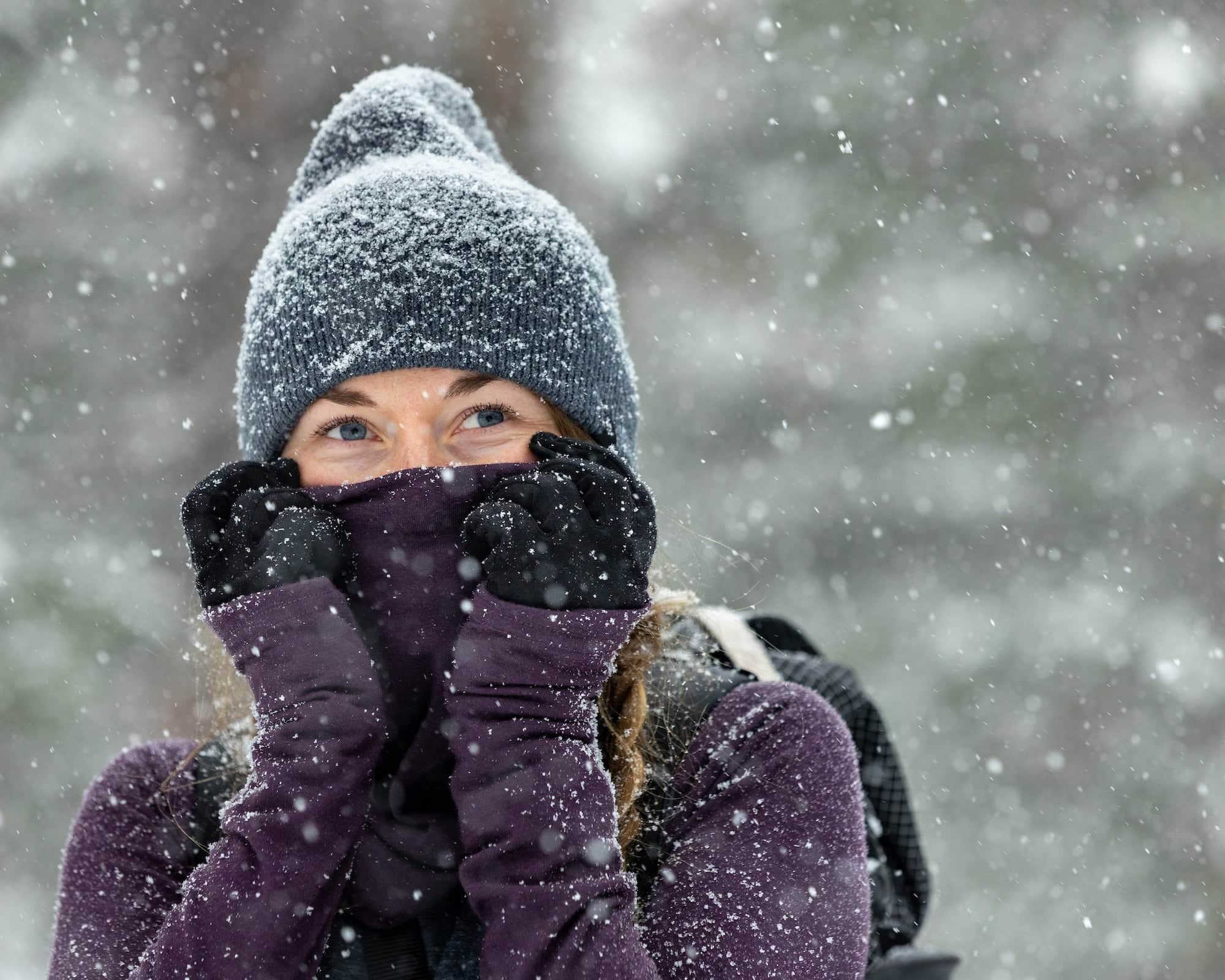Friends wearing Ridge Merino layers camping in the Alabama Hills in the winter.
Cold weather camping is a completely different game from camping during the summer. Whether you’re backpacking with limited space or car camping with more room for gear, you’ll want to pack thoughtfully for winter camping. Here are our tips for staying warm, comfortable and safe camping in cold temperatures.
Many developed campgrounds close for the winter, which means you’ll probably be dispersed camping without services. Being prepared with the right cold weather camping gear is a must. Adjust this list to fit your needs to be ready for your next cold weather camping adventure.

A cold weather base camp in Alaska.
Your Sleep System for Winter Camping
It can be hard to get good sleep when camping. Packing the right winter camping gear will keep you warm and comfortable at night and give you the best shot at decent sleep. And when it comes to winter camping, not having adequate warmth when the temps drop at night could be a life or death situation. Here’s what you’ll need:
- A 4-season tent: 4-season tents are built to hold up in strong winds and snow. They’re made with more robust materials and often have fewer mesh panels so your heat stays in. If you know it’s not going to snow and all of your other gear is warm enough, you might be able to get away with a 3-season tent, especially in milder winter climates.
- An insulated sleeping bag: Check the expected low temperature for where you’re going, then bring a sleeping bag that’s rated for below that low temp. Some sleeping bags have multiple temperature ratings listed. You might see "comfort," "lower limit" and/or "extreme." Ideally the comfort temperature should be below the low temperature you’ll be sleeping in. If your sleeping bag isn’t warm enough, look into a sleeping bag liner to boost its warmth. Read more about sleeping bag temperature ratings.
- An insulated sleeping pad: The ground can sap your body heat quickly, so it’s worth investing in a good insulated sleeping pad with a high R-value. Some winter campers prefer to bring two sleeping pads for extra insulation.
Cold weather camping equipment, especially your sleep system, comes with some tradeoffs. Insulated gear is usually more expensive and weighs more, but it can make a world of difference.

Winter Camping Clothing
The right clothing can be the game changer between a comfortable evening at camp and a miserable night. Layering is key – you’ll need to be able to add and shed layers as your activity level changes to maintain your temperature.
- Merino wool base layers: Nothing beats high quality, moisture-wicking base layers made of Merino wool. Wool against your skin will keep you warm and cozy, and any moisture (like sweat) will pass through the wool and evaporate.
- Insulating mid layers: Between your base layers and your puffy or shell, you’ll want a mid layer. We usually pack a Convict Canyon Hoodie or a heavier weight 100% Merino wool Hyde Hoodie.

Ridge athlete Tammy wearing a Convict Canyon Hoodie on a frigid Alabama Hills winter camping trip.
- Insulated outerwear: You’ll definitely want to pack an insulated puffy jacket, but often you’ll want a waterproof and windproof outer shell jacket too. For pants, depending on what activities you’re doing, you might want a waterproof shell pant. For luxurious warmth, a pair of down pants makes a huge difference.
- Headwear: We recommend packing a beanie and a neck tube or neck gaiter to keep your head and neck warm. Breathable yet warm Merino wool accessories are what we pack.
- Gloves and/or glove liners: We don’t go winter camping without a pair of gloves. Thin gloves or glove liners can be worn while cooking dinner, hiking in the cold and hanging out at camp. If you’re snow camping or need more warmth, pack a pair of waterproof gloves too. Toes and fingers often get cold first, so good gloves and socks will keep your extremities comfortable.
- Wool socks: An absolute must for any cold camping trip. Don’t underestimate the power of good Merino wool socks. Our socks dry pretty quickly, but sometimes you can’t wait – always pack an extra pair of dry socks so you can quickly change into them if you get wet hiking or setting up camp.

When camping in cold temperatures, staying dry is key. Hang up any wet socks or clothing during the warmest part of the day to dry out.
- Sun protection: We’ve been talking about layers, but sometimes midday on a winter day can be toasty. Make sure you have clothing that protects you from the sun, like a sun hoodie or Merino wool t-shirt. If you’re around snow during the day at all, you’ll need sunglasses to protect your eyes from the harsh reflections. We love Sunski sunglasses – if you’re in Mammoth you can snag some at our shop.

McKenna Peterson stays warm in Ridge Merino layers on a snow camping trip.
Gear to make cold weather camping more comfortable
A hot meal or hot drink can warm you up quickly. Some people skip the camp stove when backpacking in the summer, but in the winter, we highly recommend a good camping stove. Herbal tea bags or packets of apple cider or hot chocolate make great treats anytime of day.
If you’re car camping, a propane firepit or a portable firepit (like a Solo Stove) are nice to have. Always check fire restrictions for the area you’re heading to.

Winter camping near Bridgeport, CA with a four-season tent (left) and in Nevada with a propane firepit (right).
If you’re backpacking and don’t want to lug around a hot water bottle, a Nalgene can do the trick. Before bed, boil water in your camp stove, then fill the Nalgene and put it in the bottom of your sleeping bag. If it’s really cold out and your water might freeze, you can cuddle up with your other water bottles in your sleeping bag to keep them liquid overnight. If you have any electronics or batteries you need to keep from freezing, these can go in your sleeping bag too.
Hand warmers can be a godsend if you can’t shake the cold. A sit pad or camp chair will keep you off the cold ground and help you maintain your body heat.
You’ll want to pack all your normal backpacking gear or car camping gear too. Don’t forget your headlamp, water filter, camp dishes, etc.

Don’t forget your four-legged friends! Dog coats, dog sleeping bags and dog boots are great for winter camping trips. Ridge team member Jessica’s dog, Harper, loves her coat.
Going Snow Camping?
If you're camping on snow, you’ll have a few more things to pack.
- Snow travel gear: Pack everything you need for however you’re going to navigate the snow… skis, snowshoes, a splitboard, crampons, etc. At the very least, pack a pair of microspikes for traction on packed down snow.
- Gaiters: These are useful for keeping snow out of your boots, especially if you’ll be trekking through deep snow.
- A way to melt snow: If you’re relying on snow as your water source, bring a large pot and enough fuel to melt snow.
- Trekking poles or ski poles: Poles help a ton with stability when walking in the snow.

A couple of the tents set up at base camp on Mt. Shasta on Ridge team member Paz’s Climb Against the Odds with Breast Cancer Prevention Partners.

Ridge team member Paz (left) takes a break on a handmade snow couch with a fellow climber on his Climb Against the Odds.
Other Cold Weather Camping Tips
Stay hydrated. Many people feel less thirsty in cold weather, and it’s easy to forget to drink water when it’s cold out. Plus no one wants to crawl out of the tent for a middle of the night bathroom break. Treat staying hydrated like a job, and if cold water is tough to get down, heat up some water or make a warm drink.
Consider a bigger backpack. The bulkiness of winter camping gear means you might need a larger backpack. You’ll still want to pack light – especially since insulated gear weighs more – but make sure you can fit all of your bulky gear.
For fun, pack lights. Days are so short in the winter. Bringing a lantern or some string lights can make the nights feel more warm and festive.
Ditch wet clothes. Change out of wet clothes as soon as possible when camping in cold weather. Whether your clothes are sweaty or wet from snow or rain, they’ll chill you quickly.

Inside McKenna Peterson’s tent on a snow camping trip.
Get ready for cold nights. Eat a big, hearty dinner before bed. Digesting food helps your body stay warm. For an extra boost, do a few jumping jacks before getting in your sleeping bag to warm up your body and get your blood pumping.
Always plan for it to be colder than you expect when winter camping. Be sure to test out your gear when the consequences are low and adjust as needed.

Friend of Ridge Josh Wray on a backcountry yurt trip in Northeast Oregon.
Cold weather camping can be incredibly rewarding. You’ll get to see beautiful winter landscapes, and often you’ll have them all to yourself. Invest in high quality winter camping gear and you’ll stay warm and comfortable camping year round.




